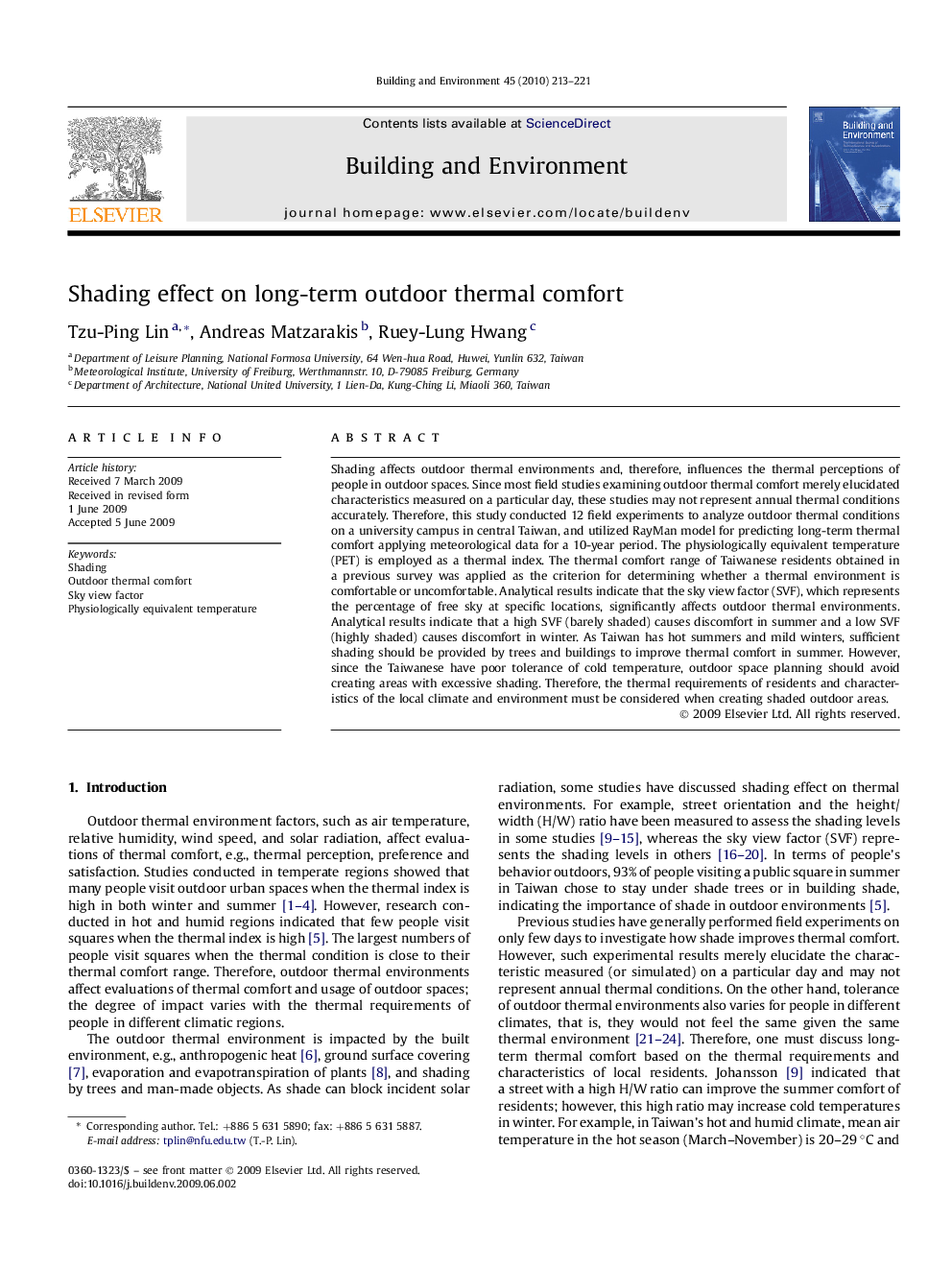| Article ID | Journal | Published Year | Pages | File Type |
|---|---|---|---|---|
| 249328 | Building and Environment | 2010 | 9 Pages |
Shading affects outdoor thermal environments and, therefore, influences the thermal perceptions of people in outdoor spaces. Since most field studies examining outdoor thermal comfort merely elucidated characteristics measured on a particular day, these studies may not represent annual thermal conditions accurately. Therefore, this study conducted 12 field experiments to analyze outdoor thermal conditions on a university campus in central Taiwan, and utilized RayMan model for predicting long-term thermal comfort applying meteorological data for a 10-year period. The physiologically equivalent temperature (PET) is employed as a thermal index. The thermal comfort range of Taiwanese residents obtained in a previous survey was applied as the criterion for determining whether a thermal environment is comfortable or uncomfortable. Analytical results indicate that the sky view factor (SVF), which represents the percentage of free sky at specific locations, significantly affects outdoor thermal environments. Analytical results indicate that a high SVF (barely shaded) causes discomfort in summer and a low SVF (highly shaded) causes discomfort in winter. As Taiwan has hot summers and mild winters, sufficient shading should be provided by trees and buildings to improve thermal comfort in summer. However, since the Taiwanese have poor tolerance of cold temperature, outdoor space planning should avoid creating areas with excessive shading. Therefore, the thermal requirements of residents and characteristics of the local climate and environment must be considered when creating shaded outdoor areas.
